Once we’ve been fly fishing for a while, most of us find ourselves in a position where we know a fair amount about angling. We might not all be experts, but we’re still pretty comfortable with the subject. We talk about it on a regular basis, we read articles and watch videos and share opinions with our friends and fishing partners until one day, pretty much out of the blue, someone actually asks for our help.
What are they biting on? What fly should I use? How did you just make that cast?
We answer as best we can, of course, and it’s usually not until much later that we realize exactly what just happened. Instead of remaining a neophyte — a student of trout, always looking up to other anglers with more knowledge and experience — the world just shifted on its axis. Now we’re something else; something different. Without even thinking about it, we just became a teacher.
Of course there are good teachers and bad teachers and there’s absolutely no guarantee that our first foray into teaching worked out well, or that we shared our knowledge effectively.
Some folks have an innate talent for explaining things to other people. Others don’t. But like any other aspect of fly fishing, teaching is a skill that most of us can learn. And after more than 25 years of helping other fly fishers catch trout, I’ve accumulated a few pointers that can make a real difference the next time someone asks for your advice on the river.
One of my favorite quotes about teaching comes from Albert Einstein: “If you can't explain it simply, you don't understand it well enough.” Einstein was right. And the corollary is that if you can’t explain it simply and clearly, you probably shouldn’t be explaining it at all. So my advice here is straight-forward. Stick to the questions you can answer with confidence. When someone asks you to teach something that’s beyond your ability, be honest. Tell them that they’ll need to look elsewhere for advice.
Another stellar quote came my way from a longtime teacher, who shared the following line with our class: “If you want to learn about owls, then go ask the mice.” I’d encourage you to think about that for a few second before you read any further.
“If you want to learn about owls, then go ask the mice.”
Let’s unpack that into two separate threads:
First, it’s important for anglers to understand that everything is connected. As the naturalist John Muir once said, "When we try to pick out anything by itself, we find it hitched to everything else in the Universe." Your wading influences your casting and mending. Your ability to read water determines where you fish your nymph. Your skill at throwing an accurate reach cast is a primary factor when it comes to achieving a drag-free drift. Everything is connected to everything else and if you want your novice fisherman to succeed, then he or she should know that every element of their angling has an influence on every other element, as well as on their overall success.
Second, answering a direct question with a direct answer isn’t always the best technique. If you’re trying to get people to really understand something, you want to encourage them to think about it on a deeper level; to go past the obvious. Sadly, way too much teaching is predicated on the idea that throwing information at the student is enough. It’s not. If you want folks to understand something, you need to engage them mentally by answering their question with another question, or by guiding them to a clue that will point them towards that special “Eureka!” moment.
For example, if I tell you that a fully-emerged mayfly dun floats on the current with upright wings, you’re liable to hold on to that information for a solid 10 or 15 minutes before it fades away into oblivion. On the other hand, if I point out a mayfly and ask “What does this little guy look like?”, then the answer — “A sailboat!” — makes a strong mental connection that can help you differentiate mayflies from caddis and stoneflies for the rest of your life.
Keep in mind that the human brain does really well with images, symbols and stories, and less well with basic data. If you use a story to illustrate a point, or if you tie a technique to an image or a symbol, you’re liable to be more successful than if you simply offer a bunch of “how-to” information.
Over the years, any number of casting instructors have stressed the importance of the rod tip following a straight line path during the cast. If you share that suggestion with someone just learning to cast, though — “Hey, make sure your rod tip stays in a straight line as you cast!” — the majority of people will look at you as if you have three heads and green hair. You can almost see them think, “How is that even possible?” But if you grab the rod with one hand, the end of the line with the other, and then show them how to make a bow & arrow cast, you can also demonstrate — in slow motion — how the flexing and then un-flexing of the rod tip allows the tip, and the line, to move in that straight line.
Or think about the neophyte who struggles with rod tip awareness, and who always feels like he has to turn his head to watch his rod and his line as he casts. What if you asked him one simple question: “If you’re using a “key grip” or a “thumb on top” grip, does your thumb always point to the same place as your rod tip?”
And when he answers in the affirmative, you can ask him if it might make more sense to pay attention to his thumb than to the rod tip. (The answer, obviously, is “Yes!” — but we want him to figure that out for himself.)
Or use the old “shadow animal” trick. Most of us have seen a friend create all sorts of neat shadows with a projector and a screen, or a flashlight and blank wall. After all, it’s not hard to use your fingers to form a bunny or a dog or a bird. So when you’re trying to illustrate how important it is to wait just a second on a downstream hook-set, why not use one hand to illustrate the trout’s mouth, and the other hand to show the path of the fly and the necessary timing? Visual aids don’t need to be fancy or complex to make a point. They simply need to be effective.
You can also help your students build on their occasional successes by teaching them to recognize patterns. When they catch a trout in a particular type of place — along an undercut bank, or where a riffle dumps into a pool, or the upstream cushion in front of a boulder — it sets the pattern. That’s when they need to start looking for similar spots to try their luck. Early pattern recognition is vital, as it frequently makes the difference between a good day and a slow day.
Finally, I’ll leave you to ponder a wonderful little quote, attributed by some to Yeats and others to Plutarch, that those of us who teach fly fishing should take to heart:
“Education is not the filling of a pail, but the lighting of a fire.”
Truer words were never spoken. So the next time someone asks for your help on the water, remind yourself that just sharing information isn’t enough. If you really want to be effective, you need to help kindle their passion.




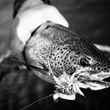


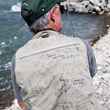







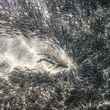
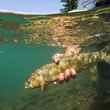



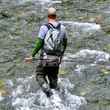
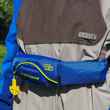



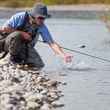
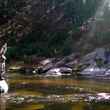

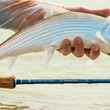
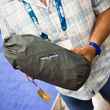

Comments